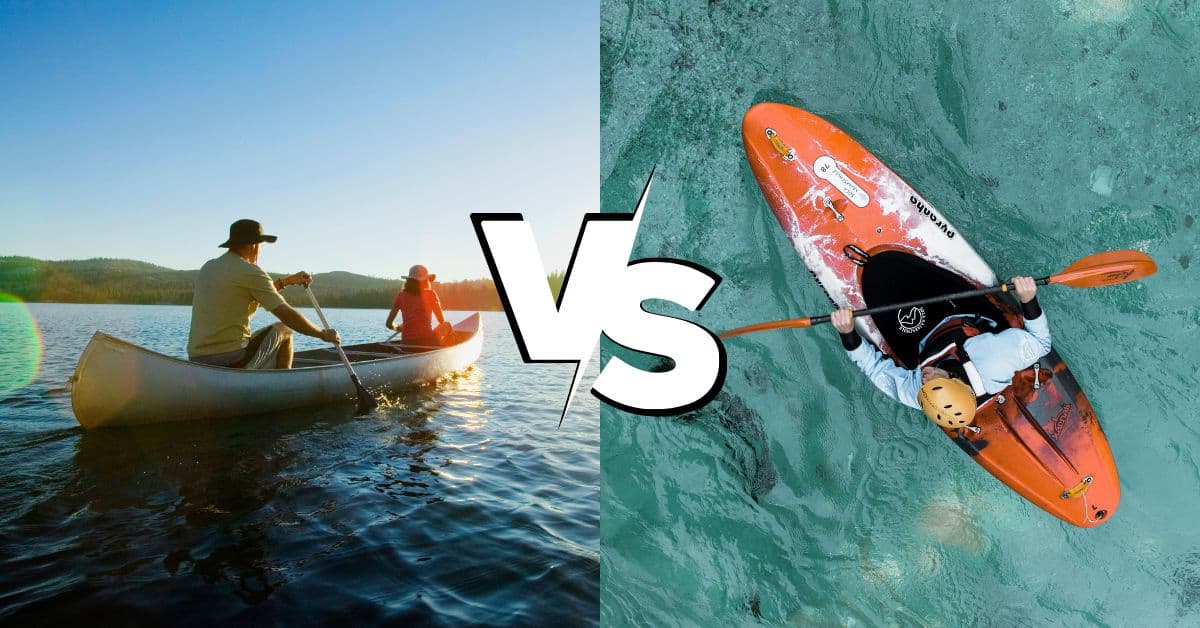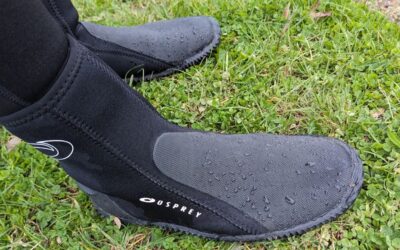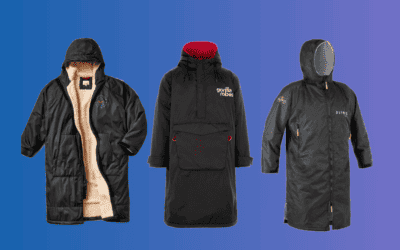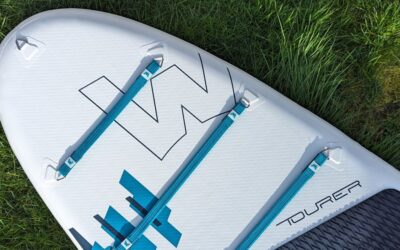Canoeing and kayaking are two of the most popular water sports in the world. Both activities are great for exploring rivers, lakes, and other bodies of water. While they share some similarities, they are also quite different in terms of design, purpose, and performance.
Canoeing involves paddling a long, narrow boat with an open top. Canoes are typically larger and heavier than kayaks, and they are designed to carry more people and gear. Canoes are great for leisurely paddling, fishing, and camping trips. They are also more stable than kayaks, making them ideal for beginners or families with young children.
Kayaking, on the other hand, involves paddling a small, narrow boat with a closed top. Kayaks are typically faster and more manoeuvrable than canoes, making them great for exploring rapids, surfing, and other adventurous activities. Kayaks are also more efficient and require less effort to paddle, making them ideal for longer trips or more experienced paddlers.
Now let’s dive in and compare the differences between canoe vs kayak…
Disclaimer: If you make a purchase via the links on our site, I may earn an affiliate commission at no additional cost to you. You can read my affiliate disclosure in the privacy policy. Thanks for your support!
Canoe and Kayak: Definitions
When it comes to watercraft, canoes and kayaks are two of the most popular options. Both are human-powered boats that are propelled using paddles. However, there are some key differences between the two that are worth noting.

Canoe
A canoe is a narrow, open-top boat that is typically longer than a kayak. It is propelled using a single-bladed paddle, which is used to push the boat through the water from one side to the other. Canoes are designed to carry multiple people and gear, making them a popular choice for camping trips and other outdoor adventures.
Canoes come in a variety of shapes and sizes, but they are typically wider than kayaks and have a flatter bottom. This design makes them more stable in calm water, but also slower and less manoeuvrable than kayaks.
Canoes are also more spacious than kayaks, making them a good choice for longer trips where you need to carry a lot of gear.

Kayak
A kayak is a narrow, closed-top boat that is typically shorter than a canoe. It is propelled using a double-bladed paddle, which is used to pull the boat through the water. Kayaks are designed to be fast and manoeuvrable, making them a popular choice for whitewater rafting and other adventurous activities.
Kayaks come in a variety of shapes and sizes, but they are typically shorter and narrower than canoes. This design makes them faster and more manoeuvrable than canoes, but also less stable in calm water. Kayaks are also more compact than canoes, making them a good choice for solo trips or shorter excursions where you don’t need to carry a lot of gear.
In summary, canoes and kayaks are both popular options for exploring the water. Canoes are wider, more stable, and more spacious, making them a good choice for longer trips where you need to carry a lot of gear. Kayaks are faster, more manoeuvrable, and more compact, making them a good choice for adventurous activities and shorter excursions.
A Quick History of Canoes and Kayaks
Canoes and kayaks have been used for thousands of years, with the earliest known canoe dating back to 8200 BC. The indigenous people of North America, who were skilled in working with wood and other natural materials, were some of the first to use canoes for transportation and fishing. Canoes were also used in warfare, with some tribes using them to launch surprise attacks on enemy villages.
Kayaks, on the other hand, were developed by the Inuit people of the Arctic. These boats were designed to be lightweight and easy to manoeuvre in the icy waters of the region. The word “kayak” actually means “hunter’s boat” in Inuit.
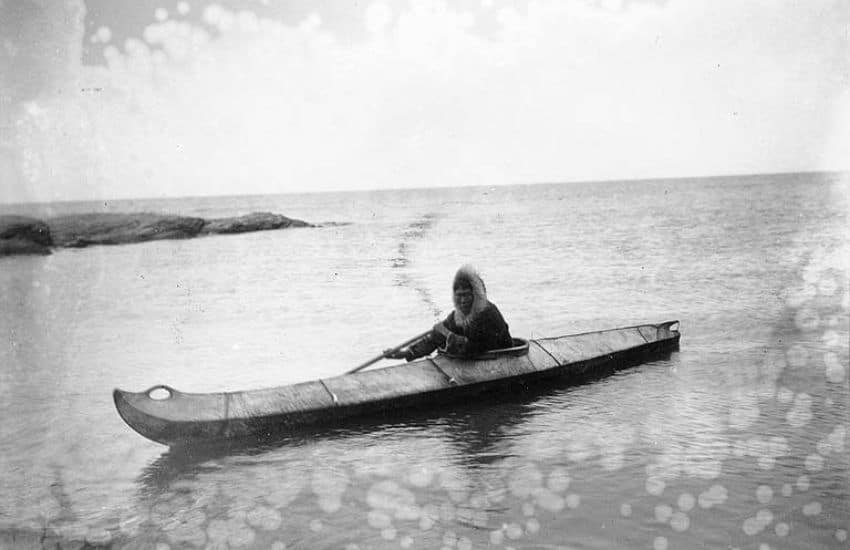
Over time, both canoes and kayaks evolved to become more efficient and effective. In the early 1800s, Europeans began to take an interest in these boats and started to develop their own versions. Canoes became popular for recreational use, with people using them for leisurely paddles down rivers and lakes.
Kayaks, too, became popular for recreational use, with people using them for everything from white-water rafting to sea kayaking. Today, there are many different types of kayaks and canoes available, each designed for a specific purpose.
It’s safe to say that canoes and kayaks have a rich history that dates back thousands of years. These boats have been used by indigenous people around the world for transportation, fishing, and warfare but over time, they have evolved to become popular recreational boats that are used for everything from leisurely paddles to extreme sports.
Choosing Between Canoe and Kayak: Factors to Consider
Deciding whether a canoe or a kayak is best for your needs depends on several factors, including your skill level, your desired activities, the type of water you’ll be navigating, and the number of people or amount of gear you’ll be carrying.
Skill Level: Kayaks, due to their higher speed and manoeuvrability, often require more skill and strength to handle, especially in choppy waters. For beginners or families with young children, canoes might be the better option. They provide more stability and are simpler to manoeuvre in calm waters.
Activities: Your choice will also depend on the type of water sport or activity you plan on doing. If you’re aiming for a relaxed paddling trip, bird watching, fishing, or a multi-day camping trip with ample gear, a canoe would be the best choice. Conversely, if you’re looking for adventure activities like white water rafting, surf kayaking or sea expeditions, a kayak would serve you better.
Water Type: Canoes are suited for calm, flat waters such as lakes, slow-moving rivers or small ponds. Their flat bottom provides stability in these conditions. Kayaks, with their v-shaped hull, perform better in fast-moving waters, rapids, or ocean waves.
Capacity: If you’re planning a solo trip or an adventurous activity that requires less equipment, a kayak would be a suitable choice. However, if you need more space for additional passengers or camping gear, a canoe’s larger capacity would be more beneficial.
In essence, the decision between a canoe and a kayak depends largely on your personal needs and preferences. If you’re still unsure, renting both types of boats and trying them out is a good way to find which suits you better.
Different Types of Canoes
Much like the diverse landscapes and waterways they traverse, canoes are designed in a multitude of styles, each uniquely adapted to fulfil specific roles and environments. In the vast spectrum of canoe types, there exist three primary categories that cater to a broad range of paddling preferences and needs. Here are the three main types of canoes:

Recreational Canoes
These canoes are designed for casual use like leisure paddling on calm waters such as lakes, ponds, or slow-moving rivers. Recreational canoes are typically wide and stable, making them excellent for beginners, families, or those looking to fish or picnic on the water. They have a high load capacity to accommodate multiple passengers and gear.
Racing Canoes
Also known as competition canoes, these vessels are built for speed. They are longer, narrower, and lighter than recreational canoes. The streamlined design allows racing canoes to cut through the water quickly, but this also makes them less stable, requiring more skill and experience to handle effectively. They usually have a lower load capacity as they are typically used for solo paddler or tandem racing events.
Whitewater Canoes
Built for navigating fast-moving waters, whitewater canoes are designed with a shorter length and high rocker (upturned ends) for increased manoeuvrability in rapids. They are typically robust to withstand collisions with rocks and other potential hazards. Most whitewater canoes come with outfitting such as thigh straps and airbags to keep the canoe buoyant and to secure the paddler during rough conditions.
Each type of canoe is designed with a specific use in mind. Recreational canoes are versatile and user-friendly, suitable for a relaxing day out on the water. Racing canoes cater to adrenaline seekers aiming for speed and performance. Whitewater canoes are for adventurous souls who love to challenge the rapid currents. As always, the right canoe for you depends on your paddling needs, skills, and the kind of water you’ll be exploring.
Different Types of Kayaks
Just like canoeing, kayaking is a versatile activity that encompasses a range of styles, each requiring a particular type of kayak. Understanding the different types of kayaks will help you choose the right one to best fit your intended use. Here are some common types:

Recreational Kayaks
These are the most common type of kayaks used for leisure activities on calm waters such as lakes or slow-moving rivers. They are typically wide, stable, and easy to manoeuvre, making them ideal for beginners. Recreational kayaks usually have a large open cockpit for easy entry and exit and come in both sit-inside and sit-on-top designs.
Touring Kayaks
Also known as sea kayaks, these expedition kayaks are designed for longer trips on open waters such as the sea or large lakes. Touring kayaks are longer and narrower than recreational kayaks, allowing them to move swiftly and smoothly through challenging water over long distances. They usually have a closed cockpit and offer storage compartments for gear.
Fishing Kayaks
These kayaks are designed specifically for anglers. They come with specialized features like rod holders, anchor systems, and sometimes even fish finders. Fishing kayaks are usually stable enough to stand in, and they often come in a sit-on-top design to allow for greater movement.
Racing Kayaks
Built for speed, racing kayaks are long, narrow, and lightweight. They require a good level of skill to manage as they are less stable and harder to turn. Racing kayaks often have a rudder controlled by foot pedals to assist with steering.

Whitewater Kayaks
These are made for navigating through rapid waters. Whitewater kayaks are shorter and have a rounded hull for high manoeuvrability and the ability to resurface quickly. They also have a closed cockpit to prevent water from entering the kayak.
Inflatable Kayaks
Inflatable kayaks are made from durable, puncture-resistant material and can be inflated for use and deflated for easy transportation and storage. Inflatable kayaks come in a variety of designs to suit different uses, including recreational, touring, and whitewater styles.
Each of these kayak types offers a unique set of characteristics that cater to specific kayaking activities. Knowing the kind of kayaking you intend to do is vital in deciding which type of kayak is right for you. From the calm serenity of lake fishing to the adrenaline rush of whitewater kayaking, there’s a kayak out there for every kind of paddler.
Recommended Reading: The Waterways Licence Explained | Paddle Board Licence | Canoe Licence
Hardshell Kayaks vs Inflatable Kayaks
When you’re looking at different types of kayaks, one key decision many will face is whether to opt for a hardshell kayak or an inflatable one. Here are some of the main differences:
Portability: Inflatable kayaks are generally more portable than hardshell kayaks. They can be deflated, packed into a bag, and carried in the trunk of a car or even on a plane. On the other hand, hardshell kayaks require a roof rack for transportation and ample storage space.
Durability: Hardshell kayaks, typically made from materials like polyethene, composite, or thermoformed plastic, tend to be more durable and resistant to punctures. Inflatable kayaks, although made with durable, puncture-resistant materials, may still be at risk of puncture or abrasion.
Performance: Hardshell kayaks usually provide better performance, particularly in terms of speed and manoeuvrability, due to their rigid structure. They’re better at cutting through waves and handling choppy waters. Inflatable kayaks may not track as well, but advancements in design and material have significantly improved their performance.
Stability: Inflatable kayaks tend to be wider and have a lower centre of gravity, which provides greater stability. This can be a benefit for beginners or those using the kayak for fishing.
Setup: Inflatable kayaks require time for setup and take down – you have to inflate and deflate them each time you use them. However, modern inflatable kayaks come with efficient pump systems that reduce this setup time significantly.
Maintenance: Hardshell kayaks require less maintenance compared to inflatable ones. Inflatable kayaks need to be dried out thoroughly before being packed away to prevent mould and mildew.
Cost: Generally, inflatable kayaks are less expensive than hardshell kayaks, making them a good choice for beginners or occasional users. However, the price of an average kayak varies depending on the brand, size, and quality of the material.
The choice between a hardshell and an inflatable kayak depends on your specific needs, budget, storage capacity, and the type of water you plan to navigate. Both types have their own set of advantages and disadvantages, and it’s important to consider these factors before making a decision.

Canoe and Kayak Safety Tips
No matter whether you choose a canoe or kayak, safety should always be your top priority. Below are some essential safety tips to keep in mind:
Always wear a life jacket: Even if you’re a good swimmer, wearing a life jacket is crucial. In case of a capsize, it can save your life.
Learn the basics: Before heading out, familiarize yourself with basic paddling techniques, safety measures, and how to handle the boat in case it overturns.
Check the weather: Always check the weather forecast before you head out. If storms or high winds are predicted, it’s safer to reschedule your trip.
Stay within your limits: Especially if you’re a beginner, it’s vital to understand your limits. Don’t venture into challenging waters or try risky manoeuvres until you’ve gained more experience.
Final Thoughts
In conclusion, both canoes and kayaks offer unique benefits and experiences.
Canoes are typically more stable, roomy, and ideal for calm water bodies, family trips, or activities like fishing and camping.
Kayaks, on the other hand, are built for speed, and manoeuvrability, and can handle rougher waters, making them perfect for adventurous water sports and solo trips.
Whether you choose a canoe or kayak, the most important aspect is to ensure that it aligns with your personal preferences, intended use, and skill level.
Both vessels promise an enjoyable time on the water, and choosing the right one can significantly enhance your overall experience.
Ultimately, whether you choose a canoe or a kayak for your aquatic adventure, the key is to enjoy the experience, stay safe, and have fun paddling!
Canoe vs Kayak FAQ
Is canoeing harder than kayaking?
Both sports have their own challenges. Canoeing can be harder to learn initially due to the different paddling techniques, but kayaking requires more strength due to the double-bladed paddles and the need for more control in turbulent waters.
Which is more stable: a canoe or a kayak?
In general, canoes are more stable than kayaks due to their wider and flatter bottom. However, this can vary based on the specific design of the boat.
Can I use a kayak for fishing, just like I can with a canoe?
Yes, you can fish from a kayak, but it’s usually more challenging due to the limited space. There are specifically designed fishing kayaks available that provide more stability and space for your fishing gear.
Is it easier to flip a kayak or a canoe?
Both canoes and kayaks can flip, especially in rough water. However, due to their narrower and more streamlined design, kayaks are generally more likely to capsize than canoes. Additionally, self-rescue in a kayak can be more challenging due to their enclosed design, hence, learning how to perform a kayak roll or wet exit is important.
Can I use my canoe or kayak in any type of water body?
The type of water body does influence the choice between a canoe or kayak. Canoes are better suited for calm waters like lakes or slow-moving rivers, while kayaks are better for rough waters, rapids, or ocean waves.

About the Author
Steve Cleverdon is an adventure blogger dedicated to helping outdoor enthusiasts make the most of their outdoor experiences. With years of travel and many epic adventures including a 3000-kilometre solo hike across New Zealand, Steve has amassed practical knowledge on outdoor gear. You can learn more about his adventures here. Through expert reviews, recommendations, and guides, he equips his readers with the best gear for their next adventure. If you want to send Steve a quick message, visit his contact page here.

